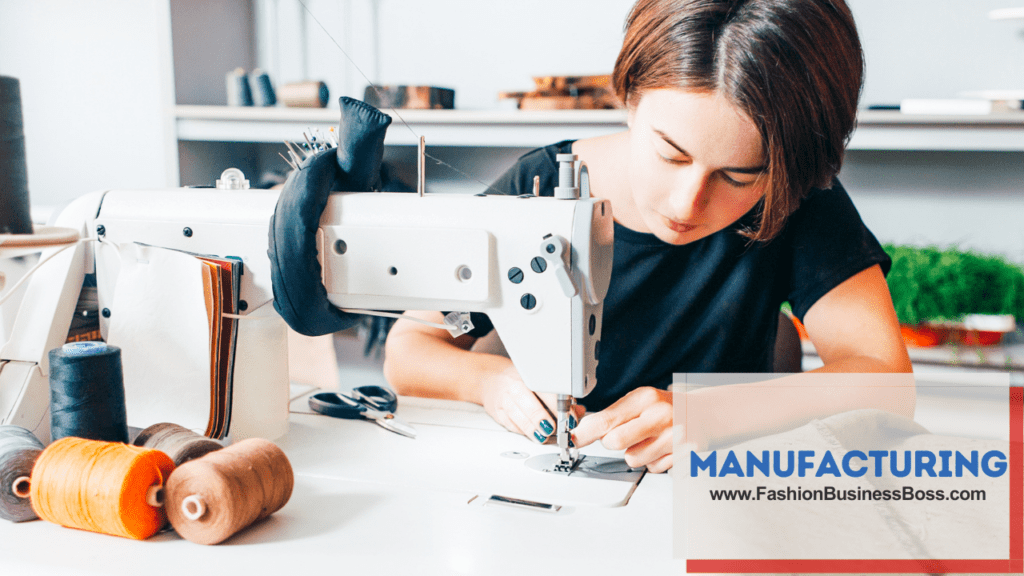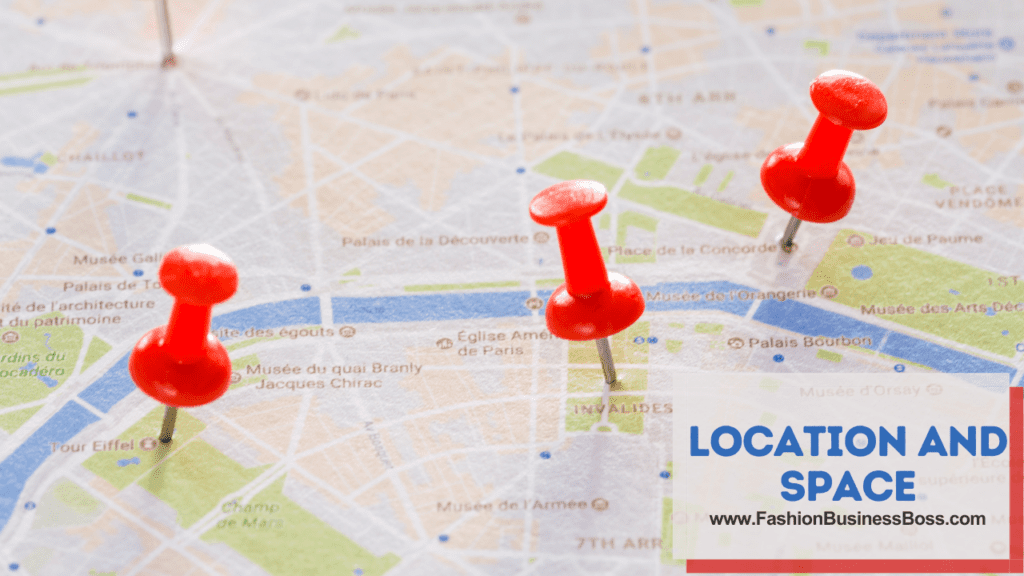Embarking on the journey of launching your very own clothing brand can be an exhilarating adventure. It’s a creative pursuit that allows you to express your unique style and fashion vision. However, before you can bring your clothing line to life, it’s essential to understand the financial aspects of this endeavor.
To start a clothing brand, you’ll need funds for design, manufacturing, branding, and marketing. Costs vary widely, so careful planning and a contingency fund are essential for growth.
In this article, we’ll explore the key factors that determine how much you need to start a clothing brand and set you on the path to growth.
Market Research

Market research plays a pivotal role in the early stages of launching a clothing brand. It entails comprehensively examining your potential customer base, the specific market segment you intend to cater to, and the competitive landscape. This phase, although not directly tied to finances, significantly shapes your startup expenditure.
Firstly, it’s essential to identify your target demographic – the group of people who are most likely to buy your clothing. Knowing their age, gender, income level, and preferences can guide your design choices and pricing strategy.
Next, consider the styles and trends that resonate with your target audience. Understanding their fashion preferences ensures that your clothing line aligns with their tastes, reducing the risk of unsold inventory.
Furthermore, researching your competitors is vital. Knowing who your rivals are, what they offer, and at what price points can help you position your brand competitively and make informed pricing decisions.
Read more about: Creation Clothing Wholesale: Your Competitive Edge
Business Plan
A well-structured business plan serves as a detailed guide for your clothing brand’s journey. It outlines key aspects of your venture, including its purpose, direction, and financial expectations. When creating your business plan, focus on the following financial aspects:
These encompass the initial expenses required to get your clothing brand off the ground. This includes the money needed for design, manufacturing, branding, and legal matters like trademarks and licenses.
Moreover, these are the ongoing monthly expenses to keep your clothing brand running smoothly. They consist of rent or space costs, utilities, employee salaries, and marketing efforts to promote your brand.
This category involves the financial requirements for sourcing and storing the materials and fabrics needed for your clothing line. It also includes the expenses associated with the actual manufacturing of your products.
By carefully considering and documenting these financial elements in your business plan, you create a clear and organized roadmap for your clothing brand’s future. It ensures that you’re financially prepared to cover both the initial setup costs and the ongoing expenses, allowing your brand to navigate its path with confidence.
Design and Development
Design and development stand at the core of every clothing brand. These stages are where your clothing line takes shape and gains its unique identity. Depending on your niche and the audience you aim to reach, you have two primary options:
If you possess the design skills and creativity, you can create clothing designs yourself. This approach can save on design fees, but you should still factor in costs for materials, prototyping, and pattern-making.
Alternatively, you can work with experienced fashion designers. This option may involve design and pattern-making fees, which designers typically charge for their expertise. You’ll also need to budget for prototyping and sample production to test and refine your designs. Don’t forget the expenses associated with sourcing fabrics and materials, as the quality and choice of materials can significantly impact the final product.
These financial considerations during the design and development phase ensure that your clothing brand’s vision is transformed into tangible, market-ready products. It’s a vital step in creating garments that resonate with your target audience and set your brand apart in the competitive world of fashion.
Manufacturing

The cost per unit of production varies based on the quantity. For instance, producing a small batch of clothing items might cost around $15 to $30 per piece. In contrast, larger production runs can reduce this cost to approximately $5 to $15 per piece, thanks to economies of scale.
Choosing to manufacture overseas, in countries with lower labor costs, can be cost-effective. However, you’ll need to account for additional expenses such as shipping, import duties, and customs fees. These extra costs can range from 5% to 30% or more of the total manufacturing cost.
Ensuring high-quality standards may involve additional expenses. This can include the cost of quality control inspections, which typically range from $500 to $1,000 per day, depending on the complexity and volume of your production. Partnering with reputable manufacturers known for craftsmanship may also result in slightly higher production costs.
These cost estimations provide a general idea of the expenses associated with manufacturing your clothing line. However, it’s crucial to obtain specific quotes from manufacturers and factor in any unique requirements your brand may have. By carefully budgeting for manufacturing costs, you can maintain a balance between cost-effectiveness and producing quality clothing that meets the expectations of your target audience.
Read more about: Custom Design Your Own Clothes: Unleash Your Creativity
Branding and Marketing
The cost of logo and graphic design can vary depending on the complexity of your design needs and the expertise of the designer. For a professional logo, you might budget anywhere from $500 to $5,000 or more. Graphic design for marketing materials, such as flyers and banners, can range from $50 to $500 per design.
Developing a website can cost between $2,000 to $10,000 or more, depending on the features and complexity. Monthly maintenance fees, including hosting, updates, and security, typically range from $50 to $300.
The cost of marketing campaigns can fluctuate significantly based on the scope and scale. Social media advertising, for instance, can cost around $1,000 to $5,000 per month, while influencer partnerships might range from $500 to $5,000 per collaboration. Email marketing services can cost between $20 to $300 per month.
These cost estimations are approximate, and actual expenses may vary based on factors like the size of your brand, the competitiveness of your niche, and the marketing strategies you employ. Careful budgeting in branding and marketing ensures that your clothing brand establishes a strong presence within your financial means.
Legal and Licensing
Compliance with legal requirements is a crucial aspect of establishing your clothing brand. It involves adhering to rules and regulations to operate your business legally. Here are the financial considerations in the legal and licensing realm:
Protecting your brand identity is paramount. Trademark registration involves securing legal rights to your brand name, logo, or other distinctive elements. This process ensures that others cannot use your brand identity, but it does come with associated costs.
If you plan to use specific fabric patterns or designs that are not your own, you may need to enter into licensing agreements. These agreements grant you permission to use these elements, but they often involve financial negotiations and fees paid to the original creators.
Seeking legal counsel is advisable to navigate the complex world of business law. Legal consultation fees may be necessary to ensure that your clothing brand complies with all relevant laws and regulations.
By budgeting for these legal and licensing expenses, you safeguard your brand’s intellectual property and ensure that your business operates within the bounds of the law. These costs help protect your brand’s assets and reputation, allowing you to establish a trustworthy and legitimate presence in the fashion industry.
Location and Space
Physical Store or Showroom:

Rent costs can vary significantly depending on the location, size, and desirability of the space. In a prime shopping district, rent can be considerably higher than in less central areas. On average, expect to allocate anywhere from $1,000 to $10,000 or more per month for rent.
Interior Design: The expenses for interior design depend on the scope of work and your aesthetic preferences. This can range from a few thousand dollars to tens of thousands of dollars or more, especially if you’re aiming for a high-end look.
Online-Only Operation:
Developing an e-commerce website can cost anywhere from $2,000 to $10,000 or more, depending on the complexity and features you require.
Ongoing website maintenance costs typically range from $50 to $300 per month, covering hosting, updates, and security.
Remember that these are rough estimates, and actual costs can vary widely based on factors like location, business size, and specific needs. Careful planning and budgeting are essential to ensure that your clothing brand’s financial resources are allocated appropriately to support your chosen approach, whether physical, online, or a combination of both.
Read more about: Custom Your Own Clothes: Elevate Your Wardrobe
E-Commerce Platform
To operate your online store, you’ll need a reliable hosting service. Costs for website hosting can range from $10 to $100 per month, depending on your website’s size and traffic. There may be ongoing maintenance costs, which can vary but often fall within the $50 to $300 monthly range.
Ensuring secure online transactions is crucial for customer trust. Setting up a payment gateway, which allows customers to make online payments, can range from $0 to $200 or more as an initial setup fee. Ongoing transaction fees are typically a percentage of each sale, around 2% to 3%.
If you opt for an e-commerce platform like Shopify or WooCommerce, subscription costs can vary. Shopify, for example, offers plans ranging from $29 to $299 per month, depending on features and requirements. WooCommerce, a WordPress plugin, is free, but you may incur additional costs for plugins, themes, and hosting.
These cost estimations are approximate, and actual expenses can fluctuate based on your specific needs and choices. Careful budgeting in the e-commerce realm ensures that your online platform is both functional and cost-effective for your clothing brand.
Contingency Fund
In the unpredictable landscape of business, unforeseen challenges can emerge at any time. It’s prudent to allocate a portion of your budget to create a contingency fund. This fund acts as a financial safety net, ready to address unexpected expenses that might surface. These can include situations like unexpected hikes in material costs, marketing campaigns that don’t yield anticipated results, or any other unanticipated setbacks that may come your way.
Determining the exact amount to allocate to your contingency fund can be a bit subjective, as it depends on factors like your overall budget and risk tolerance. However, a commonly recommended practice is to set aside about 10% to 20% of your total budget for contingencies.
For instance, if your total budget for starting your clothing brand is $50,000, setting aside $5,000 to $10,000 as a contingency fund provides you with a financial buffer to tackle unexpected challenges without severely impacting your operations.
By creating and maintaining a contingency fund, you ensure that your clothing brand remains financially resilient, allowing it to navigate unexpected hurdles and continue its operations smoothly.
Conclusion
The cost of starting a clothing brand can vary widely based on your vision, niche, and business strategy. It’s essential to approach this endeavor with a clear plan, realistic financial projections, and a keen eye for market trends. While the initial investment can be substantial, with careful planning and execution, your clothing brand can flourish and become a formidable presence in the fashion industry. Remember that financial flexibility and adaptability are key traits for any clothing brand entrepreneur.
Frequently Asked Questions

Q: What are the typical startup costs for launching a clothing brand?
A: Startup costs can vary widely, but they often include expenses for design, manufacturing, branding, and marketing. Budgeting is essential for growth.
Q: How can I reduce manufacturing costs when starting a clothing brand?
A: Reducing manufacturing costs can involve factors like producing larger quantities, choosing cost-effective materials, and exploring overseas production options.
Q: What legal considerations are important when starting a clothing brand?
A: Legal considerations include trademark registration, licensing agreements for designs, and compliance with industry regulations. Legal consultation is advisable.
Q: How important is an online presence for a clothing brand?
A: An online presence is crucial in today’s digital age. It involves expenses for website development, hosting, and payment gateways for secure transactions.
Q: Should I allocate a contingency fund when launching a clothing brand?
A: Yes, it’s wise to allocate a contingency fund to cover unexpected expenses and setbacks. This financial cushion can help ensure the brand’s resilience and growth.
To learn more about starting your own clothing business, check out my startup documents here.
Please note that the contents of this blog are for informational and entertainment purposes only and should not be construed as legal advice. Any action taken based on the information provided in this blog is solely at your own risk. Additionally, all images used in this blog are generated under the CC0 license of Creative Commons, which means they are free to use for any purpose without attribution.

Meet Shawn Chun: Entrepreneur and Fashion Business Fan.
I’m a happy individual who happens to be an entrepreneur. I have owned several types of businesses in my life from a coffee shop to an import and export business to an online review business plus a few more and now I create online resources for those interested in starting new ventures. It’s demanding work but I love it. I do it for those passionate about their business and their goals. That’s why when I meet a designer or boutique owner at a craft fair, farmers market, retail location or anywhere else I see myself. I know how hard the struggle is to retain clients, find good employees and keep the business growing all while trying to stay competitive.
That’s why I created Fashion Business Boss: I want to help fashion business owners like you build a thriving business that brings you endless joy and supports your ideal lifestyle.

